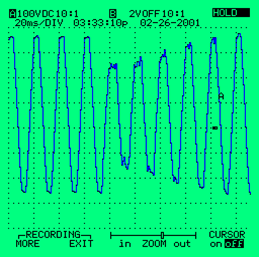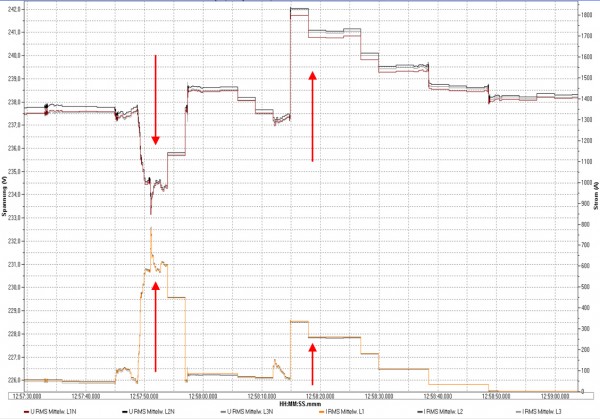Voltage Fluctuations (Dips and Swells) - Causes and Measurement Methods [Demo]
Voltage fluctuations (dips & swells) and, as a consequence, flicker endanger productivity. In this section of powerqualityonline, you will learn about the causes as well as the measurement methods for locating them and the associated remedial measures.

Fig. 0029a: Voltage drop of 21% due to load switching
Increasingly higher load densities and switched loads such as elevator drives, reversing machines and 4-quadrant controllers (e.g. robots, high-bay warehouses, machining centers) cause short-term voltage feedback effects in form of voltage dips or, in the event of unloading or regenerative power supply, voltage increases.
Voltage dips or even failures disturb switching power supplies, for example, which then issue a reset command to the processor via their "power good" or "watchdog" output. In general, such fluctuations over one or more periods are a nuisance to many loads, for example production engineering systems and their control and regulation technology. If they occur in clusters over a short period of time (5-30 Hz), they are referred to as flicker.
To eliminate the cause of the disturbance, it is essential to measure its direction.

Fig. 0029b: Voltage fluctuations (dips and swells) in the same and in the opposite direction
dark: voltage / light: current


